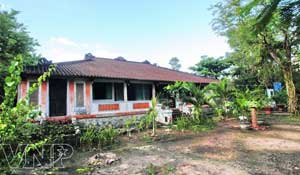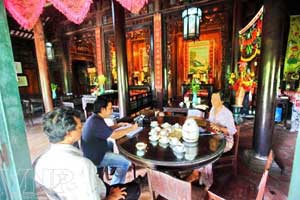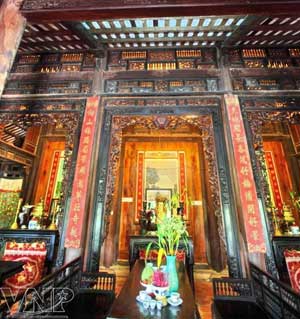The ancient house, also called the one-hundred-pillar house, is located on the left bank of the Vam Co Dong River in Long Huu Dong Commune, Can Duoc District, Long An Province.
The house is made of different varieties of precious wood, such as ebony, barian kingwood and redwood and was built by a group of 15 carpenters in My Xuyen Village, Thua Thien-Hue Province from 1901 to 1904. It has 120 pillars, including 68 round and 52 square pillars, and is set on a stone foundation, 0.9m high. Its structure is similar to Nha Ruong of Hue from the Nguyen Dynasty with three compartments and two lean-tosses. It was paved by brown, hexagonal bricks and roofed with double tiles.



According to researchers, although it has the same architecture as Nha Ruong, the house has its own features in term of decorative patterns. For example, besides traditional themes, such as “Clouds turn into dragonsâ€, “Four seasonsâ€, “Four sacred animalsâ€, “Happiness - Prosperity –Longevityâ€, southern plants and animals like bats, birds, custard apples, mangoes and pawpaw, the house was decorated with western designs, such as roses, grapes and squirrels. All are delicately carved, revealing the skilled craftsmanship and creativeness of artisans at that time.
Because of its exclusivity, the house was ranked as a national cultural and historical relic by the Ministry of Culture and Information (the Ministry of Culture, Sports and Tourism) in 1997. Throughout historical changes, the house has been preserved with its unique architecture intact as a part of the history and culture of the south in the late 19th and early 20th centuries, attracting a large number of domestic and foreign visitors.